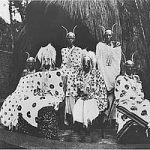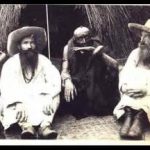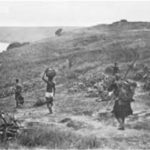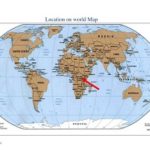Pre-Independence Politics And Protest
The Rwandan Revolution was most visible in the heroic events of central Rwanda-the focal point of the kingdom. In many renditions the Revolution has come to be represented in the actions of a visible and articulate Hutu leadership at the center. These were men of courage, perception, intelligence, and commitment. But while leadership was important in the politics that led to the Revolution of 1959-1961, it was not leadership that caused rural discontent. Instead the leaders drew on the energies derived from the Hutu experience.
During the 1950s in Rwanda there developed an alliance between three groups with convergent (though not identical) interests: the Hutu evolués (the word used in Belgian colonies for educated white-collar workers), local level Hutu leadership (transporters, traders, shop-keepers, catechists, etc.), and peasants. It is widely recognized that the formation of inter-class alliances is often crucial to a successful revolutionary movement, but such organization may be inhibited by the conditions under which peasants live, where they are subject to powerful persons who can threaten their security and even their lives:
Poor peasants and landless laborers . . . are unlikely to pursue the course of rebellion, unless they are able to rely on some external power to challenge the power which constrains them.
External resources are important, but so may be a sense of autonomy from the pervasive cultural hegemony which backs state power. In some contexts, peasants have been able to preserve or create moral autonomy stemming from an awareness of alternative conceptions of social organization, different from the one forced on them. This can provide the essential justification (and impetus) on the part of peasants to resist the powerful and even risk rebellion against the state. In Rwanda both types of situations were to be found, varying among different regions.
The effects of colonial state building, transformations in clientship, and labor control policies discussed in previous chapters fostered political consciousness among rural people; some of these same changes also made available resources that could be used for effective protest. Aspirant Hutu leaders needed to link up with the simmering rural discontent which began to be overtly expressed after World War II, and which by the mid-1950s was reaching a boiling point. It was this rural anger which gave energy to the emergent national Hutu leadership and party organization. Hutu leaders in Rwanda were able to gain the attention of the European colonial government to the extent that they could claim to represent, (and to control), the rural masses. The leaders did not create rural political consciousness, however; they articulated and channeled it, even while being pushed to make particular demands by their rural constituencies.
Hutu leaders, of course, had their own concerns and frustrations. Discrimination against Hutu in favor of Tuutsi in the schools, in institutions of the Church, and in employment practices of the state heightened awareness of ethnic distinctions among would-be Hutu elites, just as exploitative behavior of the chiefs angered the rural masses. But it was also in the mission schools that many who later became leaders in the Revolution acquired skills and contacts useful for articulating protest. At the local level, mission-educated Hutu schoolteachers often played key roles. And many of the Hutu who exercised leadership at a national level had studied at the Catholic major seminary of Nyakibanda. Such leaders could call upon a dense network of communication with the population through the Catholic press, church organizations throughout the country, contacts to Catholic groups outside Rwanda, and in the 1950s at least (although not always in earlier times), encouragement from European missionaries for the pursuit of “social justice” in opposition to the abusive rule of the Tuutsi oligarchy.
In the national political arena, increasing polarization into groups based on ethnic appellations gave the conflict of the late 1950s the appearance of an ethnic revolution. And so it was, in part. But that interpretation appears to accept implicitly the primordial nature of ethnicity; it fails to account for the variation over time and variability at any one time of ethnic identity and awareness. At the local level, regional differences in the nature of Hutu–Tutsi relations and the extent
of ethnic cleavage were reflected in substantial variations in the intensity of anti-Tuutsi sentiment. Clearly, considerations of class and power were important at this level.
https://uk.amateka.net/pre-independence-politics-and-protest/https://uk.amateka.net/wp-content/uploads/2020/09/revolution.jpghttps://uk.amateka.net/wp-content/uploads/2020/09/revolution-150x150.jpgModel CitizenshipThe Rwandan Revolution was most visible in the heroic events of central Rwanda-the focal point of the kingdom. In many renditions the Revolution has come to be represented in the actions of a visible and articulate Hutu leadership at the center. These were men of courage, perception, intelligence, and...BarataBarata rpierre@ikaze.netAdministratorAMATEKA | HISTORY OF RWANDA




